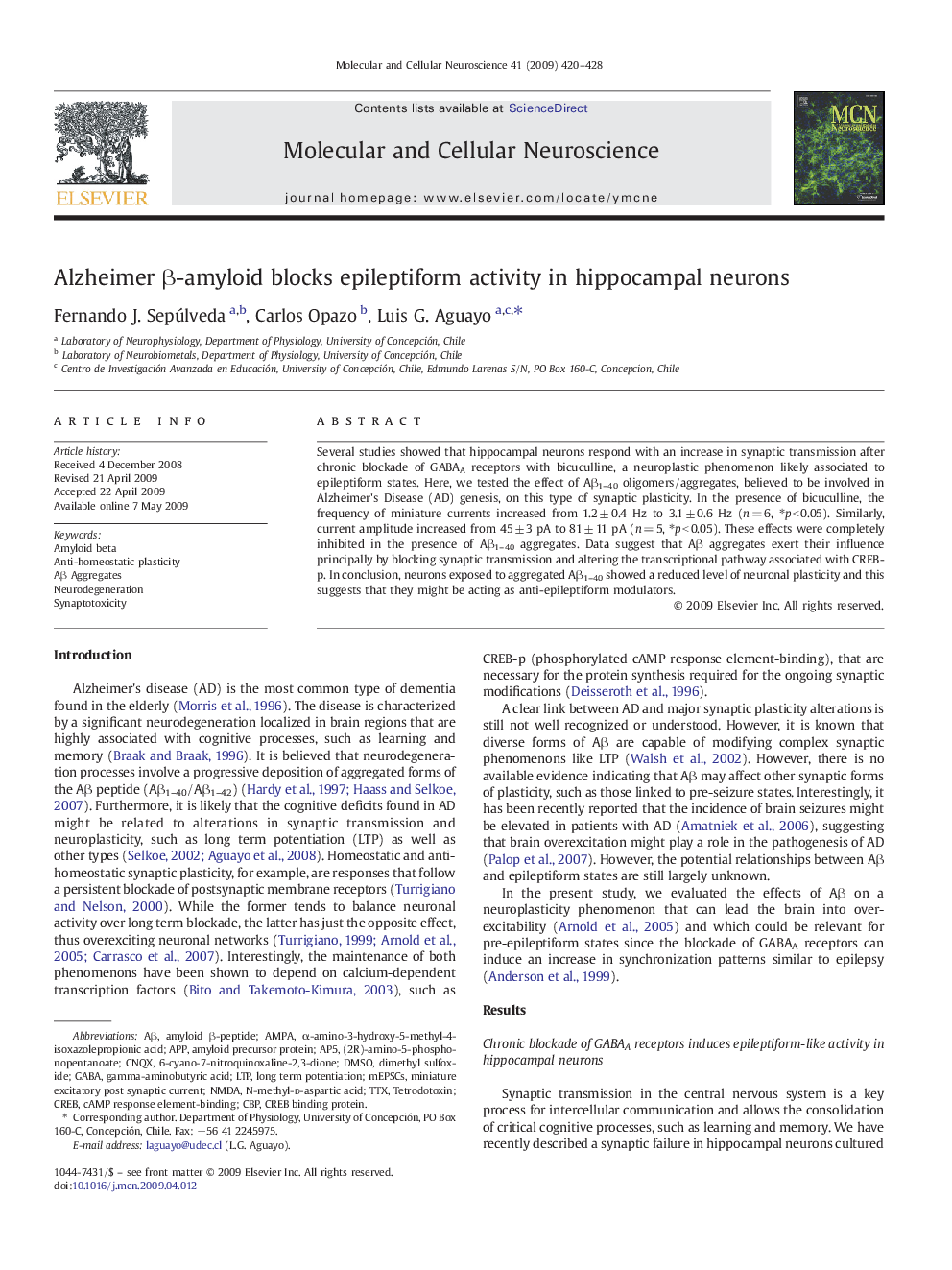| Article ID | Journal | Published Year | Pages | File Type |
|---|---|---|---|---|
| 2198916 | Molecular and Cellular Neuroscience | 2009 | 9 Pages |
Several studies showed that hippocampal neurons respond with an increase in synaptic transmission after chronic blockade of GABAA receptors with bicuculline, a neuroplastic phenomenon likely associated to epileptiform states. Here, we tested the effect of Aβ1–40 oligomers/aggregates, believed to be involved in Alzheimer's Disease (AD) genesis, on this type of synaptic plasticity. In the presence of bicuculline, the frequency of miniature currents increased from 1.2 ± 0.4 Hz to 3.1 ± 0.6 Hz (n = 6, ⁎p < 0.05). Similarly, current amplitude increased from 45 ± 3 pA to 81 ± 11 pA (n = 5, ⁎p < 0.05). These effects were completely inhibited in the presence of Aβ1–40 aggregates. Data suggest that Aβ aggregates exert their influence principally by blocking synaptic transmission and altering the transcriptional pathway associated with CREB-p. In conclusion, neurons exposed to aggregated Aβ1–40 showed a reduced level of neuronal plasticity and this suggests that they might be acting as anti-epileptiform modulators.
